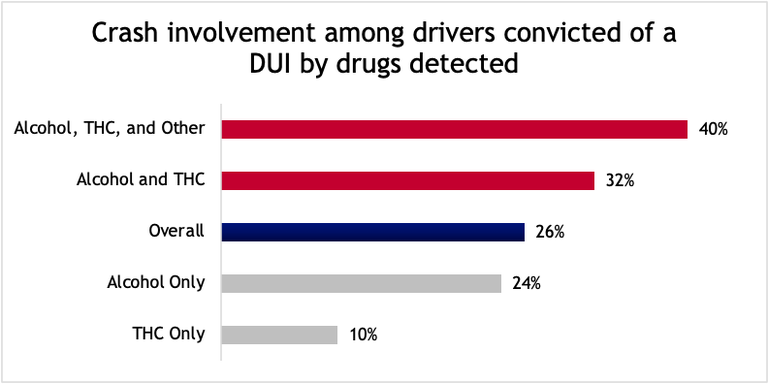Combining drugs and alcohol increases risky driving and crashes New state data shows role of impaired driving in record-setting traffic fatalities
News Release
Statewide — The Colorado Department of Transportation (CDOT), the Colorado Department of Public Safety (CDPS) and AAA are pointing to concerning trends in impaired driving that may help explain the increase in traffic deaths in Colorado since 2019. The new data shows crashes and impaired driving arrests involving multiple substances, such as alcohol and cannabis used together, are prevalent. In addition, research shows that combined use of substances increases the risk of crash involvement.
Today, state traffic safety officials, law enforcement and AAA gathered to raise awareness of the dangers of driving after using alcohol in combination with other drugs.
CDOT recently reported that 691 lives were lost on Colorado roads in 2021, up 50% since 2011. Since 2019, there has been a 44% increase in the number of fatalities involving an impaired driver.
“Colorado’s increase in traffic fatalities can be attributed to numerous causes, but impaired driving is a big one. And when we see increases in impairment involving multiple substances, we have to address them immediately,” said CDOT’s Office of Transportation Safety Director Darrell Lingk. “It’s our job to make sure people know that driving after combining alcohol and cannabis or other drugs is extremely dangerous.”
The Colorado Division of Criminal Justice published a report in January 2022 analyzing more than 26,000 impaired driving cases that were filed in Colorado in 2019, following the cases from arrest through final court outcome. The DCJ report found:
45% of drivers tested positive for multiple substances. The most common combination of drugs detected was alcohol and Delta 9-THC, which is the primary psychoactive component of cannabis and may indicate recent use. The second most common pairing was alcohol combined with other drugs such as cocaine, methamphetamine, sedatives and opioids.
68% of individuals with detected Delta-9 THC also had some other substance present. Alcohol was the most common co-occurring substance.
As displayed in the chart below, the risk of being involved in a crash increases dramatically depending on the type and number of impairing substances in the driver’s body.

(Rosenthal, A., & Reed, J. K. (2022). Driving Under the Influence of Drugs and Alcohol Driving Under the Influence of Drugs and Alcohol. Colorado Department of Public Safety. Retrieved from cdpsdocs.state.co.us/ORS/Docs/Reports/2021-DUI_HB17-1315.pdf)
From a separate AAA report, compared to alcohol-only users, drivers who admitted to using both marijuana and alcohol were more likely to report risky behaviors like:
- Speeding on residential streets
- Aggressive driving
- Texting while driving
"Fundamentally, choosing to use alcohol or cannabis is just that — a personal choice. While there are safe ways to use both drugs, there is no safe way to drive under the influence of either, and those dangers are compounded when they’re combined, " said Skyler McKinley, regional director of public affairs for AAA. "Never, ever, drive impaired."
Alcohol effects judgment — and a 2018 survey by CDOT of more than 18,000 Colorado roadway users also found that the more often people consumed cannabis, the less dangerous they considered driving high to be. Layering the two can lead to people making very bad choices.
In response to the trend, CDOT is informing the public about the amplified dangers of driving impaired on multiple substances through numerous outreach and advertising campaigns. Law enforcement agencies also have more than 150 specially trained Drug Recognition Experts statewide. CDOT’s Highway Safety Office offers ARIDE, an advanced training to detect impaired drivers, to every officer in the state.
Starting in July of 2019, the Colorado Bureau of Investigation (CBI) began providing alcohol and drug toxicology testing through Marijuana Tax Cash Funding to all Colorado law enforcement agencies investigating suspected impaired driving cases. After the launch of the state-sponsored toxicology testing, CBI found no change in the alcohol results in DUI cases, but identified both Delta-9 THC and polydrug cases increased 14%.
“Even if you’ve only had one beer and half an edible, find a safe ride home. Get a rideshare, call a friend, or wait until you’re sober. Or, just stay home. It’s not worth the risk,” said Glenn Davis, Highway Safety Manager at CDOT.
In the coming year, the agencies will implement a variety of enforcement, education and research initiatives to increase safety on Colorado roads and prevent impaired driving.
